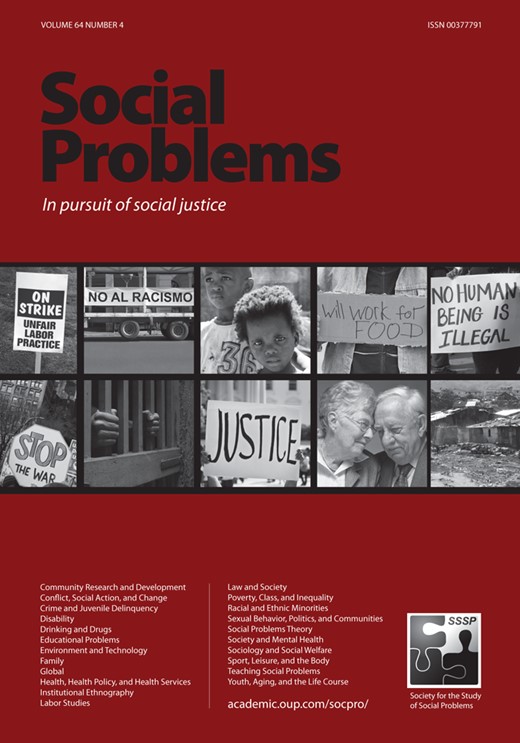-
Views
-
Cite
Cite
Ka-Yuet Liu, To Compare is to Despair? A Population-Wide Study of Neighborhood Composition and Suicide in Stockholm, Social Problems, Volume 64, Issue 4, November 2017, Pages 532–557, https://doi.org/10.1093/socpro/spw044
Close - Share Icon Share
Abstract
Neighborhood context can change the effect of a socio-demographic attribute on the risk of suicide. Eight hypotheses about the interactions between neighborhood composition, ethnicity, income, and socially disadvantaged propositions are proposed based on social support, social comparison, and social regulation mechanisms. They are tested with a population-based dataset of all adults (1.4 million) who lived in the greater Stockholm area in the 1990s. On one hand, multi-level analysis shows that suicide risk increases with the level of affluence in one’s neighborhood, particularly among individuals with low income. This supports the notion that income comparison can have negative consequences. On the other hand, social welfare recipients are less likely to commit suicide when there are other social welfare recipients in the neighborhood. Suicide risk among immigrants decreases with the proportion of co-ethnics in the neighborhood, confirming previous findings on social support and suicide. However, further analyses show that the protection effect of having co-ethnic neighbors is limited to immigrants from countries with low suicide rates. This study shows that administrative data can be used to examine neighborhood effects on rare outcomes. The findings are relevant to the contemporary trends towards rising income inequality and ethnic diversity.





